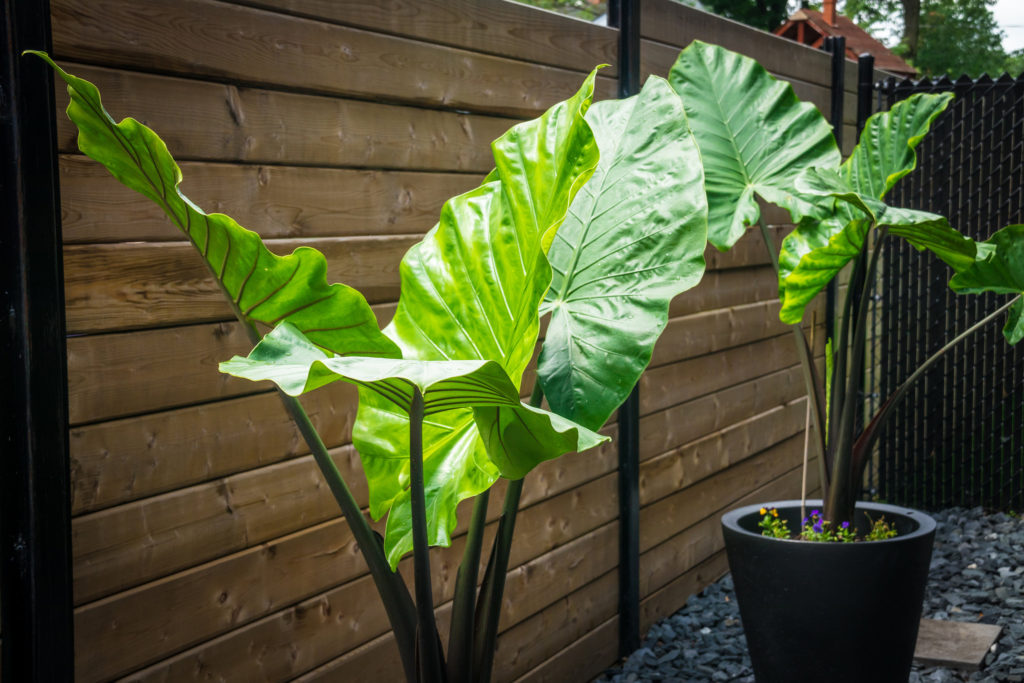
Elephant ear plants from the Aroid family are crazy gorgeous with their massive leaves and popping colors. Alocasia, Colocasia, and Xanthosoma are some of the most well-known in the family for these traits.
However, Alocasia looks a lot like another plant from the same family but a different branch, namely the Giant Philodendron. Although they look similar there are some obvious differences and here we’ve highlighted them to help you identify your plant fast!
Oh and if you want to see another look-a-like check out this article: Colocasia Vs Alocasia: How To Tell Them Apart
And if you love Philodendrons and would like to see some cool varieties, check out these:
Everything You Need to Know About Elephant Ear Philodendron
Philodendron ‘Pink Princess’: A Unique and Beautiful Houseplant
What Is A Philodendron Minima? Here’s What You Need To Know
What Is A Philodendron White Princess & How To Care For It?
(As an Amazon Associate, I earn from qualifying purchases.)
Table of contents
- 1. Alocasia has a distinctively different colored central vein while Giant Philodendron doesn’t.
- 2. Alocasia doesn’t have aerial roots, while Giant Philodendron does.
- 3. Alocasia’s cataphylls stay on the stem, while a Giant Philodendron’s cataphylls dry and fall off.
- 4. Alocasias grows from a corm, while a Giant Philodendron has a regular root system.
- Final Words
1. Alocasia has a distinctively different colored central vein while Giant Philodendron doesn’t.


Anyone who has ever had an Alocasia knows this is one of their striking beauty points. For example, Alocasia ‘Frydek’ has dark green, velvety leaves with a sharp white central vein. This contrast gives the plant an aesthetic appeal that many sought in most Alocasias.
On the other hand, the Giant Philodendron has an inconspicuous main vein that blends with the leaves. This is typical in regular philodendrons, which sport simple overall foliage with occasional variegations. However, some Alocasias are exceptions to this rule, such as the Alocasia Cucullata or ‘hooded dwarf elephant ear’, which doesn’t have a distinctly colored central vein.
2. Alocasia doesn’t have aerial roots, while Giant Philodendron does.
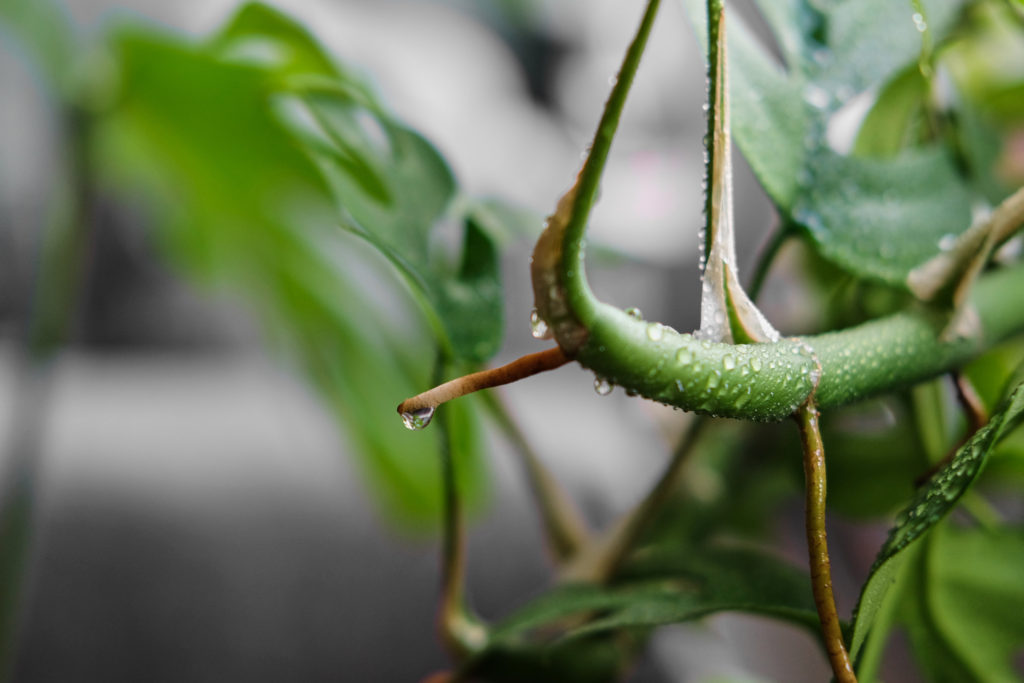
Aerial roots are basically roots on a plant that grows above ground. You may have seen these in most climbing plants like philodendrons. They come out of nodes, i.e., small nubs on the stem, and wrap around trellis supports to grow upwards.
Alocasia doesn’t sprout aerial roots at all. Even if you look closely at a node, you won’t expect to find short, thin green roots coming out of it at all. They’re not epiphytes – plants that grow and climb on other plants.
But Giant Philodendrons are clingy babies and will climb up anything using their aerial roots. This is a sight to behold – it’s like watching a Chow Chow attempt an obstacle course. With their massive foliage in your face, you’ll have to duck underneath and find their elusive aerial roots to confirm this.
3. Alocasia’s cataphylls stay on the stem, while a Giant Philodendron’s cataphylls dry and fall off.
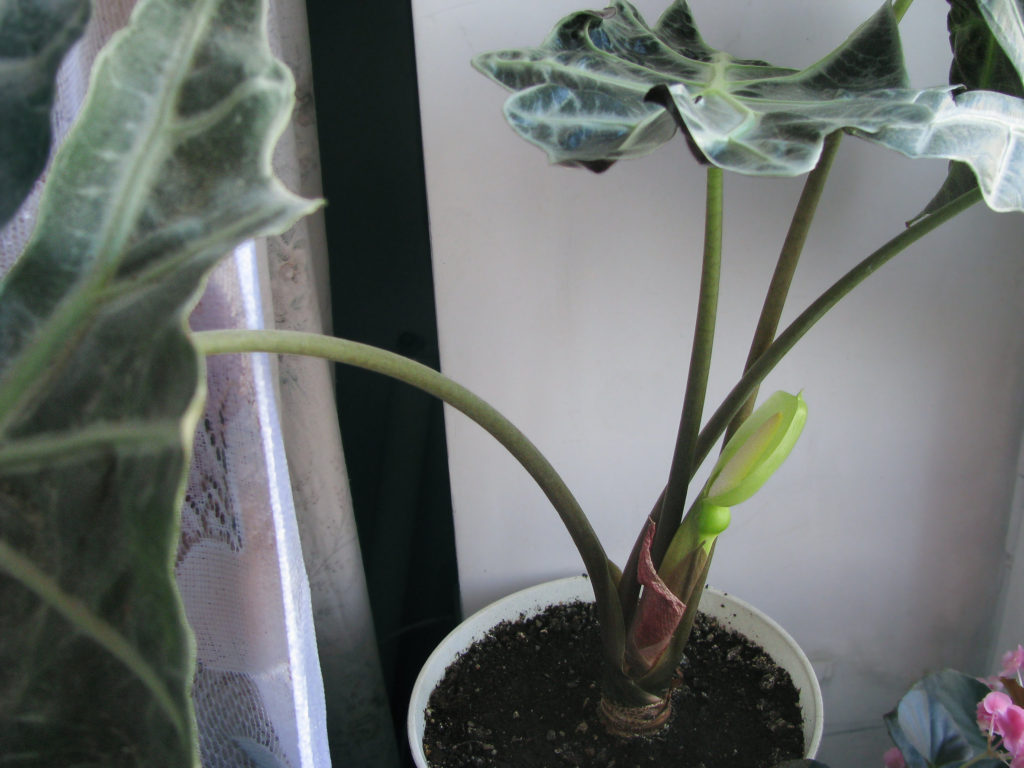
Cataphylls are sheath-like leaves that protect a new developing leaf. These are usually noticeable by the nodes where the petioles, i.e., leaf stalks, will grow. Once the leaves fully unfurl, the cataphylls tend to stay on the leaf, just like in Alocasia’s case. You can typically find these leaf sheaths at the base of an Alocasia’s stems.
In Giant Philodendron’s case, you won’t see remaining cataphylls at all. You may catch some in action when a leaf is actively growing. Otherwise, they’ve pretty much curled up and fallen off the plant. You may even mistake these as small, dried-off leaves.
4. Alocasias grows from a corm, while a Giant Philodendron has a regular root system.

This is probably one of the most defining features you can immediately tell if either one is an Alocasia or a Giant Philodendron. However, it does involve removing your plant from its pot to check. It’s a last resort situation but a surefire way to end the guessing game.
A corm is basically a bulbous stem where smaller roots grow from. The petioles/leafstalks of the Elephant Ear leaves grow directly off the top of this tuber root. This is how all Alocasias grow. It’s worth noting that those long stems you think are stems of the plant are actually just really supersized leafstalks of Alocasias.
Like the rest of philodendrons in general, Giant Philodendrons have a regular root system. This is basically multiple roots extending from a central stem/stems. You won’t find any bulb-like tuber here as you would an Alocasia.
Final Words
With that said, it takes a keen eye to differentiate between an Alocasia and a Giant Philodendron. But it’s definitely not an impossible task, and both are just simply fantastic plants to have and liven up your home space. Happy planting!
References:
https://hort.extension.wisc.edu/articles/elephant-ears-colocasia-alocasia-and-xanthosoma/
https://garden.org/plants/view/137274/Giant-Philodendron-Philodendron-giganteum/


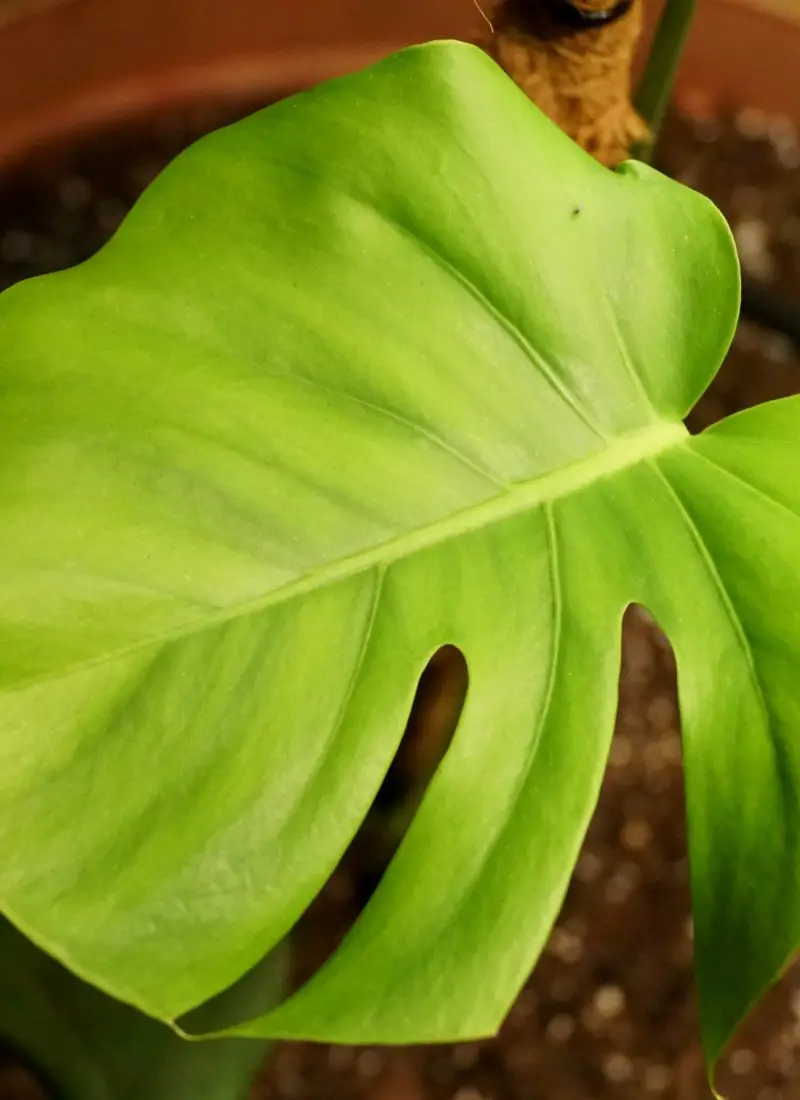
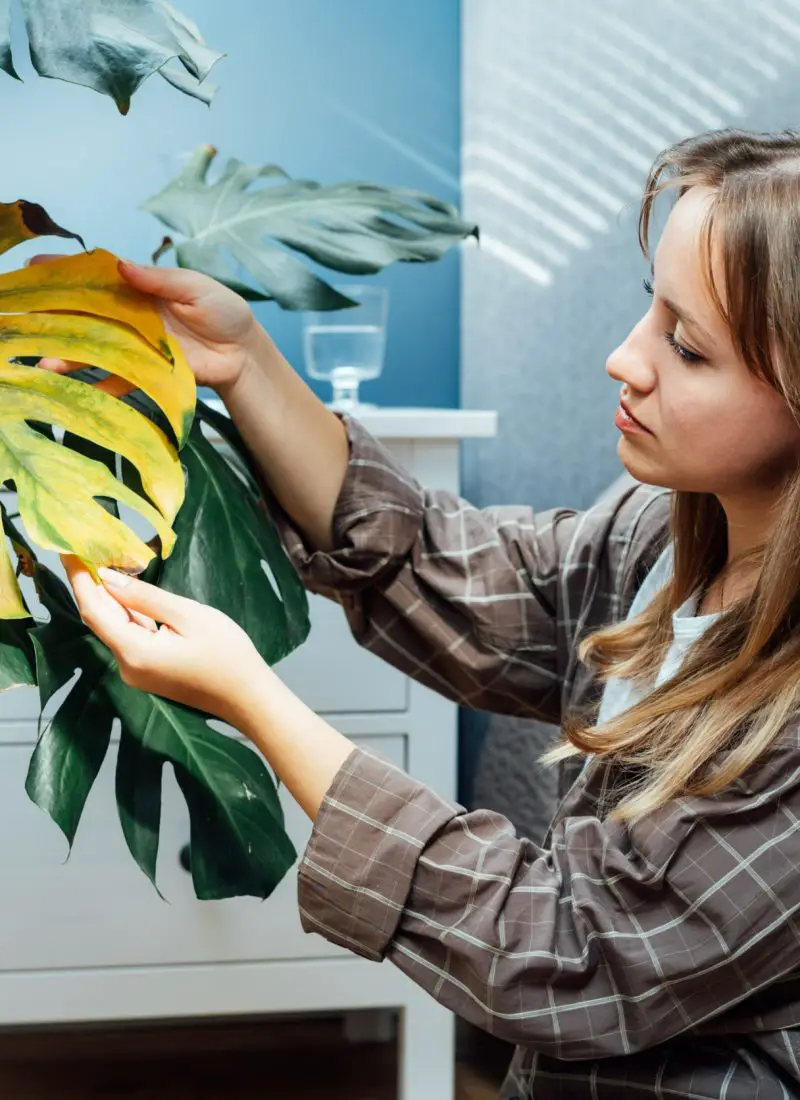
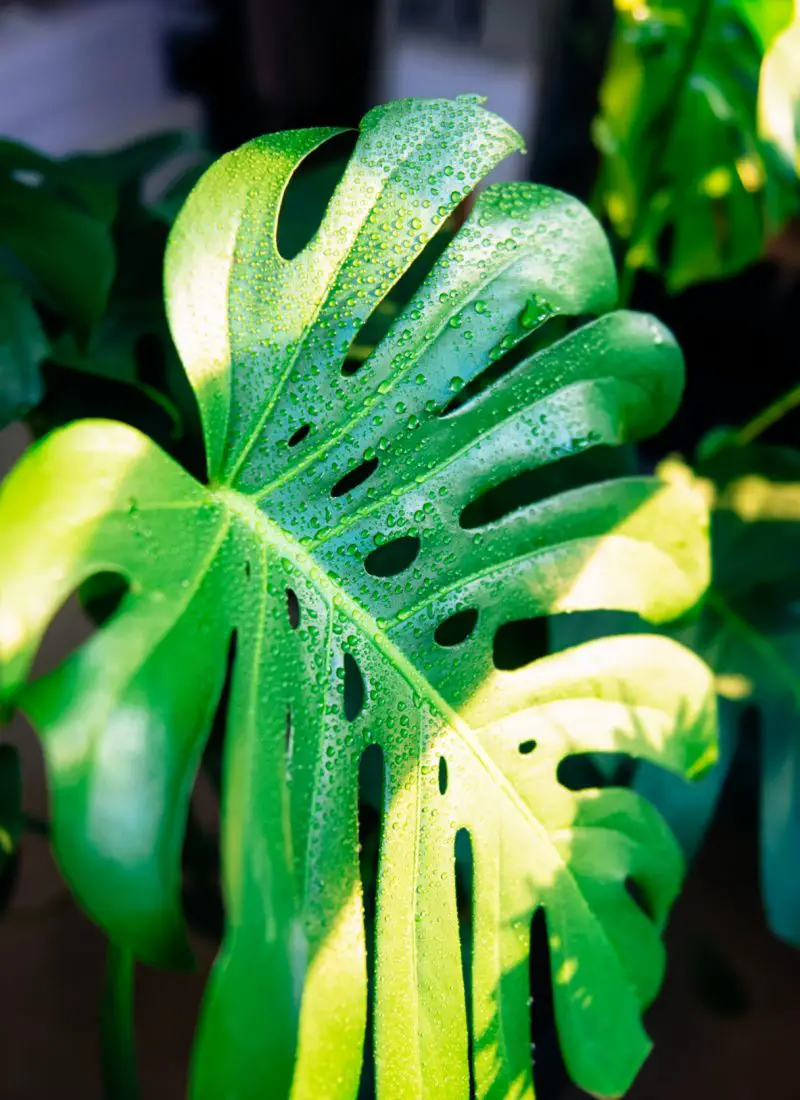

Leave a Reply